Thingiverse
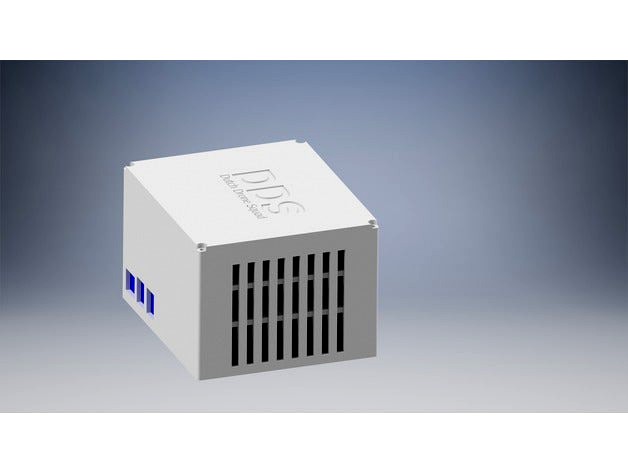
Race timer case by BMLfpv
by Thingiverse
Last crawled date: 3 years ago
Some background info
The Delta 5 Race Timer is an innovative, cost effective solution for keeping track of race laps when racing FPV (First Person View). The designer of the Delta 5 Race Timer is Scott Chin. The system is open source, and utilizes the video transmitter frequencies instead of traditional transponders. For more information about Delta 5 Race Timer, visit the following web site:https://github.com/scottgchin/delta5_race_timer
The Delta 5 Race Timer system can also work with a native lap timing software:https://www.livetimescoring.com/
Before you get started
It is a fantastic system and you can keep up to 8 racers with it, and you can build it for about €150,- euros. Especially the integration with livetime makes this timer a great DIY race timer project.
If you live in the Netherlands and need help with building the delta5 race timer or want to have this race timer case printed for your own build. Then you can also contact Dutch Drone Squad:https://www.facebook.com/dutchdronesquad/ or info@dutchdronesquad.nl
They have experience in building and printing this delta5 race timer (case) and are happy to help you.
What to be aware of...
If you have never used a linux based / command line system before, you may have some challenges with the Raspberry Pi setup. Fortunately, the setup process for getting a raspberry pi up and running is pretty easy.
Basic soldering skills, and soldering equipment are going to be needed. I assume that you're probably already in the RC hobby if you're reading this, so this shouldn't be a problem for most people.
Hardware
First, decide how many nodes you want to set up. One node can monitor one video frequency (in the 5.8 ghz range). The hardware currently supports up to 8 nodes. Please note: the software currently doesn't allow switching, and only monitors one channel per node. This means that the hardware is a bit more costly, but the lap times are going to be very accurate with the highest resolution possible.
All hardware required is listed on the Github link above, but I'll summarize it here and also add a few additional parts that I used. I purchased almost all of mine from Banggood. Prices listed are from there as of the time of writing this.
Each node requires an Arduino Nano. At banggood (Geekcreit® ATmega328P Nano V3) they sell clone versions for €2,50 and they work fine.
Each node also requires an RX5808. This is the video receiver. €8,- each on Banggood.
A Raspberry Pi 3 Model B. €38,-
1K resistors: Quantity 3.
100K resistor: Quantity 1. This is per each node. (Total of 24 1K resistors, 8 100K resistors if building 8 nodes). I bought them from Conrad in sets of 100 for €3,- per set.
You will need one 5v 2.5A voltage regulator. This will be sufficient for powering all 8 nodes, which should draw around 2A of current (including the Rasp Pi). I recommend this one: https://www.pololu.com/product/2850 Cost: €12,-
You will need one 3.3v 2.5A voltage regulator. This will be sufficient for powering all 8 receivers, these also work at 5v but give less heat at 3.3v. I recommend this one: https://www.pololu.com/product/2849 Cost: €11,-
a set of 40pin female header connector sockets (40 pieces: € 4,20) and 40 pins male header strip (30 pieces: € 3,50). I used this so that I can switch both the arduinos and receivers if necessary.
Other stuff:
You will need an SD card for the Rasp Pi. I recommend minimal 8GB.
As power connector I used an xt60 plug so you can connect a lipo, but also have a DC jack plug to xt60 so that a regular transformer also fits. Pay attention when using a transformer that it gives enough output power, but also not too much! 12V - 1A works fine. You can also check if it is enough by connecting the PI to a screen and watching during startup if you do not see a yellow thunder symbol.
You will need to decide how you want to connect to it. Many people just use a really long ethernet cable (eg. 40-50m). Wifi is also an option, but not really recommended because of the latency in a wifi connection.
About the case
The case allows for up to 8 nodes. 4 are mounted on the bottom, and 4 on the top in slots.
The 30mm fan cut out allows for cooling.
It is designed so that all inputs of the pi are easily accessible and you can easily change a PCB if necessary.
It has 4 holes so you can fix the raspberry pi with screws.
Credits
On behalf of Dutch Drone Squad we thank Boudewijn for the intensive cooperation to design this race timer case, you did a great job! And finally, I would like to give a credit to Techy G, I have used his text as a basis and also recommend to take a look at his version of the delta5 race timer.
The Delta 5 Race Timer is an innovative, cost effective solution for keeping track of race laps when racing FPV (First Person View). The designer of the Delta 5 Race Timer is Scott Chin. The system is open source, and utilizes the video transmitter frequencies instead of traditional transponders. For more information about Delta 5 Race Timer, visit the following web site:https://github.com/scottgchin/delta5_race_timer
The Delta 5 Race Timer system can also work with a native lap timing software:https://www.livetimescoring.com/
Before you get started
It is a fantastic system and you can keep up to 8 racers with it, and you can build it for about €150,- euros. Especially the integration with livetime makes this timer a great DIY race timer project.
If you live in the Netherlands and need help with building the delta5 race timer or want to have this race timer case printed for your own build. Then you can also contact Dutch Drone Squad:https://www.facebook.com/dutchdronesquad/ or info@dutchdronesquad.nl
They have experience in building and printing this delta5 race timer (case) and are happy to help you.
What to be aware of...
If you have never used a linux based / command line system before, you may have some challenges with the Raspberry Pi setup. Fortunately, the setup process for getting a raspberry pi up and running is pretty easy.
Basic soldering skills, and soldering equipment are going to be needed. I assume that you're probably already in the RC hobby if you're reading this, so this shouldn't be a problem for most people.
Hardware
First, decide how many nodes you want to set up. One node can monitor one video frequency (in the 5.8 ghz range). The hardware currently supports up to 8 nodes. Please note: the software currently doesn't allow switching, and only monitors one channel per node. This means that the hardware is a bit more costly, but the lap times are going to be very accurate with the highest resolution possible.
All hardware required is listed on the Github link above, but I'll summarize it here and also add a few additional parts that I used. I purchased almost all of mine from Banggood. Prices listed are from there as of the time of writing this.
Each node requires an Arduino Nano. At banggood (Geekcreit® ATmega328P Nano V3) they sell clone versions for €2,50 and they work fine.
Each node also requires an RX5808. This is the video receiver. €8,- each on Banggood.
A Raspberry Pi 3 Model B. €38,-
1K resistors: Quantity 3.
100K resistor: Quantity 1. This is per each node. (Total of 24 1K resistors, 8 100K resistors if building 8 nodes). I bought them from Conrad in sets of 100 for €3,- per set.
You will need one 5v 2.5A voltage regulator. This will be sufficient for powering all 8 nodes, which should draw around 2A of current (including the Rasp Pi). I recommend this one: https://www.pololu.com/product/2850 Cost: €12,-
You will need one 3.3v 2.5A voltage regulator. This will be sufficient for powering all 8 receivers, these also work at 5v but give less heat at 3.3v. I recommend this one: https://www.pololu.com/product/2849 Cost: €11,-
a set of 40pin female header connector sockets (40 pieces: € 4,20) and 40 pins male header strip (30 pieces: € 3,50). I used this so that I can switch both the arduinos and receivers if necessary.
Other stuff:
You will need an SD card for the Rasp Pi. I recommend minimal 8GB.
As power connector I used an xt60 plug so you can connect a lipo, but also have a DC jack plug to xt60 so that a regular transformer also fits. Pay attention when using a transformer that it gives enough output power, but also not too much! 12V - 1A works fine. You can also check if it is enough by connecting the PI to a screen and watching during startup if you do not see a yellow thunder symbol.
You will need to decide how you want to connect to it. Many people just use a really long ethernet cable (eg. 40-50m). Wifi is also an option, but not really recommended because of the latency in a wifi connection.
About the case
The case allows for up to 8 nodes. 4 are mounted on the bottom, and 4 on the top in slots.
The 30mm fan cut out allows for cooling.
It is designed so that all inputs of the pi are easily accessible and you can easily change a PCB if necessary.
It has 4 holes so you can fix the raspberry pi with screws.
Credits
On behalf of Dutch Drone Squad we thank Boudewijn for the intensive cooperation to design this race timer case, you did a great job! And finally, I would like to give a credit to Techy G, I have used his text as a basis and also recommend to take a look at his version of the delta5 race timer.
Similar models
thingiverse
free

Delta 5 Lap Timer/Race Timer (D5RT) - case for V2 PCB by lmig
...1x arduino, 1x rx5808).
so for a whole day of use you'll need aprox. a 3s10000mah, a 4s8000mah or a 6s5000mah for this setup.
thingiverse
free

Delta 5 Race Timer Shield Case by techyg
... prototype designs. if you have any comments/recommendations for improvements, please feel free to mention those in the comments.
thingiverse
free

Raspberry Pi case by madlag
...l raspberry pi cases.
the model was done with openscad, it's fully parametric.
(that's my first model under openscad ...)
thingiverse
free

PidFlight Lap Timer Case by fjmb58
...pv racing laptimer
everything you need to know about building your own can be found here:https://www.pidflight.com/pidflight-lap/
thingiverse
free

D5RT Housing - 4&8 Node - Delta 5 Race Timer by FreeFormFPV
...mer/blob/master/doc/hardware%20and%20software%20setup%20instructions.md
facebook-https://www.facebook.com/groups/delta5racetimer/
thingiverse
free

Raspberry Pi 1 Model B case by GiuPeppe
...mall holes.
if you still want to make changes like a camera slot i have uploaded the f3d file.
it is one of my first designs :^)
thingiverse
free

BTT PITFT50 by sek_is_back
...t raspberry
for the connection to the pi i used a 75cm display cable.
two additionel screws 3x6 to fix the bottom with the holder
thingiverse
free

Raspberry Pi Case for Voron electronics Case by HoloHolovic
...spberry pi on middle door. i have different psu so you need to edit screw holes for psu.
print settings are same as original one.
thingiverse
free

TARDIS Raspberry Pi Case with removeable Top and light by Kilianix
...hot-melt adhesive.
more details can be found in german here: http://kilian.hofmann-zw.de/tardis-gehaeuse-fuer-den-raspberry-pi-3/
thingiverse
free

Raspberry Pi Zero case by RossBurrow
...e by rossburrow
thingiverse
i bought an acrilic case for my raspberry pi zero, so i created a file to print a new one if needed.
Timer
turbosquid
$5

timer
... available on turbo squid, the world's leading provider of digital 3d models for visualization, films, television, and games.
turbosquid
free

Timer
... available on turbo squid, the world's leading provider of digital 3d models for visualization, films, television, and games.
design_connected
$9

Two Timer
...two timer
designconnected
established & sons two timer computer generated 3d model. designed by industrial facility.
3d_export
free

sand timer
...sand timer
3dexport
turbosquid
$3

Timer Ball
...lty free 3d model timer ball for download as ma, obj, and fbx on turbosquid: 3d models for games, architecture, videos. (1525312)
turbosquid
$9

Kitchen Timer
... available on turbo squid, the world's leading provider of digital 3d models for visualization, films, television, and games.
turbosquid
$7

Eggs Timer
...odel eggs timer for download as 3ds, obj, fbx, blend, and dae on turbosquid: 3d models for games, architecture, videos. (1455294)
turbosquid
free

Kitchen timer
...itchen timer for download as max, max, max, fbx, obj, and max on turbosquid: 3d models for games, architecture, videos. (1581192)
turbosquid
$49

Hourglass Sand Timer
...alty free 3d model hourglass timer for download as ma and obj on turbosquid: 3d models for games, architecture, videos. (1431455)
turbosquid
$3

Electronic timer panel
...alty free 3d model electronic timer panel for download as max on turbosquid: 3d models for games, architecture, videos. (1363343)
Race
3ddd
$1

race
...race
3ddd
мотоцикл
race
turbosquid
$15

Racing
...d
royalty free 3d model racing for download as obj and blend on turbosquid: 3d models for games, architecture, videos. (1474846)
3d_export
$5
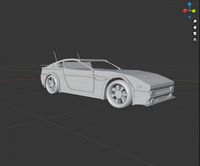
racing car
...racing car
3dexport
racing car
3d_export
$5

racing helmet
...racing helmet
3dexport
helmet 3d model for motocross or racing cars
3d_export
$5

racing car
...racing car
3dexport
low poly classical racing car model
3d_ocean
$29

racing car
...cing car rim seat speed sport sport car tyre
detailed 3d model of racing car. all materials are included. model is ready for use.
3d_ocean
$29

racing car
... rim seat speed spoiler sport sport car tire
detailed 3d model of racing car. all materials are included. model is ready for use.
3d_ocean
$15

Race Car
...race car
3docean
a very detailed and realistic 3d model of a race car, which was created with polygons.
3ddd
$1
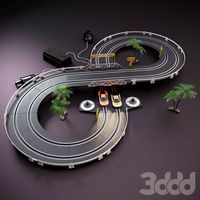
Turbo Racing
... машинка
игрушечная гоночная дорога "turbo racing". почувствуй себя настоящим гонщиком.
3d_export
$100

start race motocross
...start race motocross
3dexport
start race motocross
Case
3d_export
$1
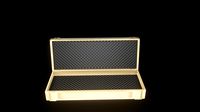
case
...case
3dexport
case
archibase_planet
free

Case
...case
archibase planet
showcase show-case glass case
glass-case + cakes - 3d model for interior 3d visualization.
archibase_planet
free

Case
...case
archibase planet
showcase show-case glass case
glass-case for chips - 3d model for interior 3d visualization.
archibase_planet
free

Case
...case
archibase planet
case shelving drawer
case - 3d model for interior 3d visualization.
archibase_planet
free

Case
...case
archibase planet
case rack locker
case - 3d model for interior 3d visualization.
archibase_planet
free
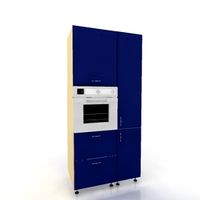
Case
...case
archibase planet
case drawer kitchen furniture
case - 3d model for interior 3d visualization.
archibase_planet
free

Case
...case
archibase planet
case cupboard shelving
glass case - 3d model for interior 3d visualization.
archibase_planet
free

Case
...case
archibase planet
case handbag suitcase
case - 3d model (*.gsm+*.3ds) for interior 3d visualization.
archibase_planet
free

Case
...case
archibase planet
case suitcase
case 5 - 3d model (*.gsm+*.3ds) for interior 3d visualization.
archibase_planet
free
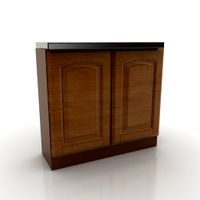
Case
...case
archibase planet
locker case dresser
case - 3d model (*.gsm+*.3ds) for interior 3d visualization.
